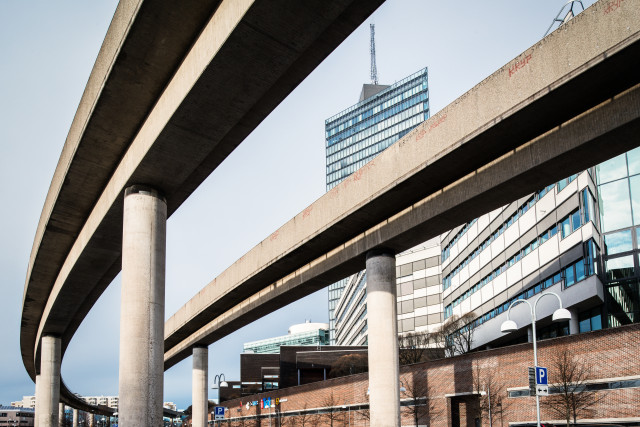•Traffic flow theory, Traffic investigations
•Effect relationships for accessibility, traffic safety, environment
•Project task: Analysis, dimensioning, design and regulation of various traffic facilities

The design and regulation of road traffic facilities is based on the interrelationship between driver – vehicle – road- and traffic environment including unprotected road users. This requires a thorough understanding of traffic behaviour and traffic process in terms of interactions between different road users. Furthermore traffic legislation and road building regulations create fundamental requirements on which the design of sustainable road traffic facilities must be based.
Choose semester and course offering to see current information and more about the course, such as course syllabus, study period, and application information.
KTH Campus
Spring 2026: P3 (7.5 hp)
50%
60195
Normal Daytime
Swedish
Places are not limited
Please note: all information from the Course syllabus is available on this page in an accessible format.
Course syllabus AH1022 (Autumn 2025–)•Traffic flow theory, Traffic investigations
•Effect relationships for accessibility, traffic safety, environment
•Project task: Analysis, dimensioning, design and regulation of various traffic facilities
After passing the course, the student should be able to:
•Identify different traffic terms in the fundamental flow relationships and explain their relationship.
•Identify and explain the basic traffic engineering concepts and methods for data collection and analysis.
•Gain practical application of methods for selecting sustainable traffic control solutions, e.g. signalized and non-signalized intersections that contribute to reducing traffic jams, delays and their effects on the environment and safety, i.e. ensuring sustainable development of the transport system.
•Discuss and compare the different development areas of traffic engineering for sustainable transport systems.
•Application of different data and simulation programs for traffic problem solving.
•Calculate and apply methods to reduce the impact of traffic on society, such as strategies for traffic safety, accident reduction and parking solutions.
•Gain knowledge of Intelligent Transport Systems (ITS) and its role in traffic management for more efficient use of the transport system.
AI1527 Introduction to the Planning and Building Process 13.5 credits
AI1128 Economics of the Built Environment 7.5 credits
AH1030 Urban Development and Transport System 7.5 credits
Based on recommendation from KTH’s coordinator for disabilities, the examiner will decide how to adapt an examination for students with documented disability.
The examiner may apply another examination format when re-examining individual students.
If the course is discontinued, students may request to be examined during the following two academic years.
Approved Examination (TEN1; 4.5 credits) and exercises (ÖVN1; 3.0 credits)